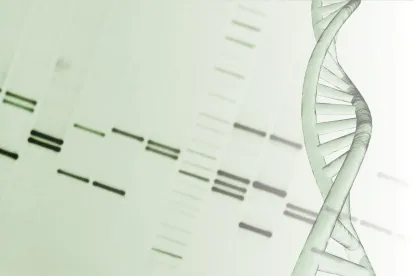On July 22, 2015, the U.S. District Court for the District of Maryland dismissed a long standing patent infringement suit brought by StemCells, Inc. against Neuralstem, Inc., on the ground that all those with an ownership interest in the patents-in-suit did not voluntarily join as plaintiffs in the action.StemCells, Inc v. Neuralstem, Inc., Case No. 06-cv-187-RWT (D. Md. July 22, 2015). The decision highlights that even informal agreements among collaborators can be construed as assignments of inventions and that there is often a difference of opinion, even among experts, as to who made an inventive contribution to a patent filing.
The Patents-in-Suit and Agreements
The patents-in-suit (“patents”) are U.S. Patent Nos.: 5,851,832; 6,497,872; 7,101,709; 7,115,418; and 7,361,505, which are all continuations-in-part of U.S. Serial No.: 07/726,812 (the “‘812 application”). The ‘812 application was filed on July 8, 1991, naming Drs. Samuel Weiss and Brent Reynolds as co-inventors. During the course of examination of the ‘812 application, inventorship was raised by the USPTO, and in particular, whether Dr. Wolfram Tetzlaff should be named as an inventor of the application. After an investigation by the attorney prosecuting the application, it was determined that Dr. Tetzlaff was not a co-inventor.
On July 3, 1991, just a few days prior to the filing of the ‘812 application, Drs. Weiss, Reynolds and Tetzlaff signed a memorandum (dated July 2, 1991), agreeing to divide 50% of the ownership among themselves of the potential commercial value of the invention that led to the ‘812 application (the “1991 Memo”). The remaining 50% ownership interest went to their employer, the University of Calgary, through the university’s agent, University Technologies, Inc. (“UTI”). According to the 1991 Memo, the 50% ownership interest due to the self-named inventors was to be allocated as follows: 45% to Dr. Weiss, 45% to Dr. Reynolds, and 10% to Dr. Tetzlaff.
Also on July 3, 1991, Drs. Weiss and Reynolds, but not Dr. Tetzlaff, signed an assignment purporting to assign their interest in the invention of the ‘812 application to UTI, the commercial out licensing arm of the University of Calgary. Dr. Tetzlaff was not identified as a co-inventor and did not sign the assignment document.
The University of Calgary eventually returned any rights it had in the inventions and patents to Drs. Weiss and Reynolds, who then through a series of transactions eventually assigned them to NeuroSpheres Holdings Ltd. (“NeuroSpheres”). NeuroSpheres executed license agreements with StemCells, which included patent rights in the patent applications (all continuations of the original of the ‘812 application) that matured into the patents-in-suit. StemCells then asserted them against Neuralstem in this patent infringement action.
A Question of Contribution
Almost 5 years into the lawsuit, defendant Neuralstem filed a motion to dismiss based on the discovery of the 1991 Memo. Neuralstem alleged that should Dr. Tetzlaff have a valid inventorship interest in the patents, then StemCells does not have standing since he never assigned his interested to NeuroSpheres. As a co-owner of the patents, he must join as a party-in-interest. To resolve the issue, the court evaluated whether Dr. Tetzlaff acquired an ownership interest either as a co-inventor of the patents or through the 1991 Memo that may have assigned part ownership of the patents to him.
In first deciding whether Dr. Tetzlaff is a co-inventor, the court evaluated his contributions to the invention.
The court first determined that the invention related to the growth, proliferation and use of neural cells. As stated by the court, Dr. Reynolds came into the possession of the cells that he subsequently put in culture with certain growth factors. He found that unexpectedly, the combination of growth factors not only resulted in more neurons surviving, but also increased cell proliferation.
Several facts were highlighted by the court as being key in the inventorship analysis of the discovery of the growth and proliferation of the cells. It was undisputed that the three scientists knew each other, having worked in close proximity, and that Drs. Weiss and Tetzlaff jointly submitted a 1990 grant application detailing research relating to the discovery. The 1990 grant application acknowledged that Dr. Tetzlaff coordinated all phases of the molecular biology experiments. The court also noted with interest that the three scientists co-authored several technical publications relating to the invention.
In reviewing the testimony from Drs. Weiss, Reynolds and Tetzlaff regarding the contributions of all to the discovery, the court focused on the alleged self-serving testimony of Drs. Weiss and Reynolds in that they characterized Dr. Tetzlaff’ s contribution to the invention as financial, and not technical in nature. In contrast, the court noted that Dr. Tetzlaff’ s testimony was more convincing and attributed his contribution to the collaboration as two-fold: he did the work necessary to confirm that the discovered neurons would work in animals and he performed the immunocytochemistry to confirm the types of cell that were proliferating. This work was considered by the court to be essential to determine with precision the types of cells that were proliferating. The court also noted that Dr. Tetzlaff designed the human experiments for use of the cells in humans which the court considered to be an essential part of the evolution of the discovery into a patentable invention.
Based on this evidence and the testimony of the three scientists, the court concluded that Dr. Tetzlaff was a co-inventor.
Ownership by Contract
The court then turned to the question of ownership. The agreement among the scientists to share in ownership of the “invention” was evaluated under Canadian contract law. The court stated that the 1991 Memo was confirmatory evidence of a prior oral agreement to share in the ownership interest of the discovery and profits. It was therefore determined to be an effective assignment of any ownership interest in the inventions to each of Drs. Weiss, Reynolds and Tetzlaff. The court also determined that the 1991 Memo was not preempted by the July 3, 1991 assignment to the university because the 1991 Memo was dated and effective one day prior to its signing and the July 3, 1991 assignment to the university.
A Curious Case to Ponder
This case presents a curious situation for at least two reasons. First on the issue of the informal agreements and assignments of inventions, two documents, executed on the same day presented contradictory conclusions as to ownership of the intellectual property. In determining which agreement was controlling, the court heavily relied on the fact that the 1991 Memo was dated and deemed effective one day prior to its signing, and one day prior to the execution of the assignment to the university. As it was first in time (by one day), the 1991 Memo was determined to preempt the university assignment.
Second, on the issue of inventorship, the court did not appear to consider when conception of the invention was complete and more specifically, if Dr. Tetzlaff joined after completed conception by Drs. Reynolds and Weiss, In the federal circuit’s decision ofUniv. of Pittsburgh v. Hedrick, 91 USPQ2d 1423 (Fed. Cir. 2009), the court held that a scientist, who joined a project after completion of conception of the invention by others and who generated data confirming the prior conception, was not a coinventor. In that case, the Federal Circuit determined that the scientist’s whose work simply confirmed the isolation and culturing of a particular type of stem cell was thus was not a co-inventor since such work merely confirmed the conception of others. The court held that it was immaterial that the named inventors did not know with scientific certainty the cells’ inventive qualities and that others helped them gain such scientific certainty. Here, while Dr. Tetzlaff assisted with determining clinical use of the cells it is not clear from the court’s decision if such was confirmatory of prior conception by Drs. Weiss and Reynolds.
This case has been pending for some time in district court and it is not unlikely that it will continue on appeal, where a review of issues of inventorship, ownership, and standing will continue.




 />i
/>i

